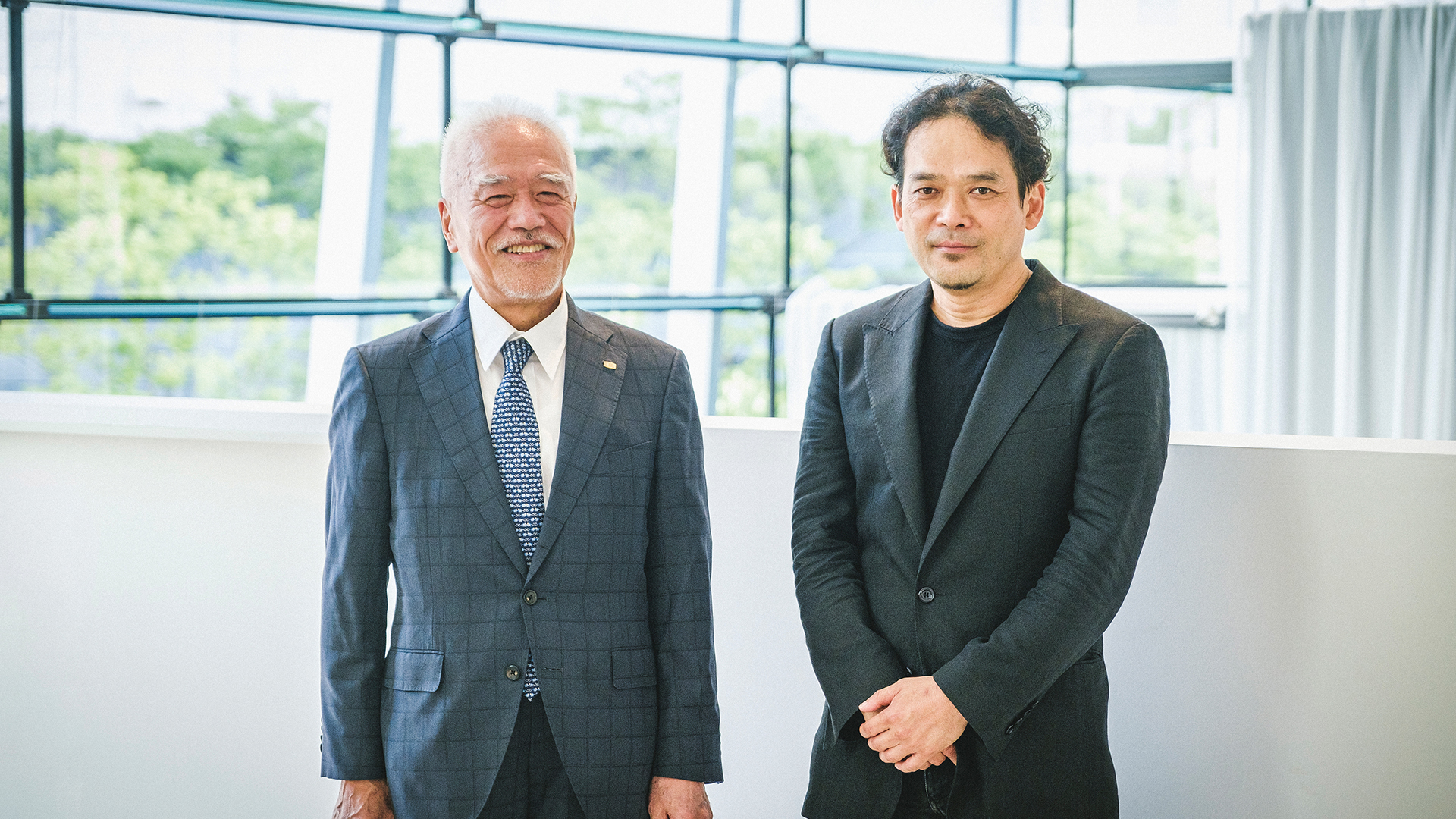
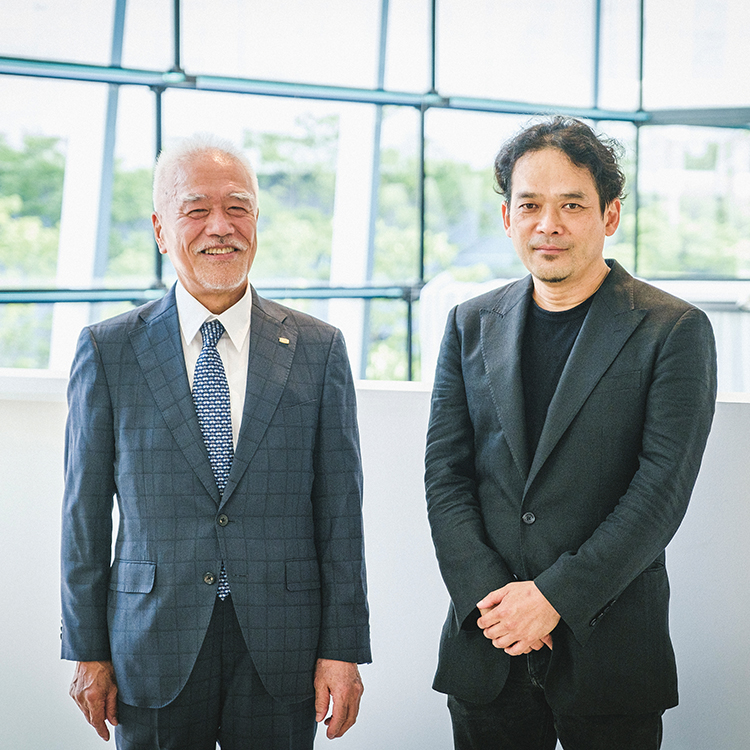


Junzo Tateno
CEO of UNION Corporation
Born in 1947, Junzo Tateno graduated from the Faculty of Law at Konan University (Kobe, Japan) in 1970
and entered Aoki Construction that same year. He joined UNION in 1973 and became CEO and President in 1990.
He serves as Chairman of the Union Foundation for Ergodesign Culture, a Public Interest Incorporated Foundation,
and the Osaka Industrial Bureau. He is also Vice Chairman of the Osaka Chamber of Commerce and Industry.
Ryuichi Ashizawa
RYUICHI ASHIZAWA ARCHITECT & associates
Born in 1971, Ryuichi Ashizawa graduated from Waseda University' s School of Science and Engineering, Department of Architecture in 1994, before starting work at TADAO ANDO ARCHITECT & ASSOCIATES. In 2001, he founded RYUICHI ASHIZAWA ARCHITECT & associates. Ryuichi Ashizawa is a professor at the University of Shiga Prefecture. His works focus on the relationship between architecture and the environment, and he has worked extensively on sustainable architectural designs.
14
TATENO
Where are you from originally?
ASHIZAWA
I was born in Kawasaki, Kanagawa and grew up in Yokohama. I moved to Tokyo for high school and later entered Waseda University’s school of art and architecture. After graduating I started working at TADAO ANDO ARCHITECT & ASSOCIATES.
TATENO
So you studied architecture in Tokyo and then worked at Mr. Ando’s architectural firm in Osaka. Who taught you architecture in university?
ASHIZAWA
In university, I belonged to Osamu Ishiyama’s studio and underwent quite strict instruction. After graduating, I knew I wanted to work under a professor of architecture. That’s what got me interested in Mr. Ando and his approach to communicating with society through architecture.
TATENO
This period when you were a student was the very time Mr. Ishiyama and Mr. Ando were most passionate about cultivating young talent, wasn’t it?
ASHIZAWA
Yes. I was actually doing kickboxing at the time.
TATENO
Is that right? Kickboxing. Mr. Ando also used to be a professional martial artist when he was younger, if I’m not mistaken.
ASHIZAWA
Mr. Ando was once a professional boxer, which sparked his interest in me. When I was a student, Mr. Ando asked me “what are you up to?,” so I told him “studying architecture at Waseda University” and brought him my portfolio. To which he replied “I’m not interested in that.” *Laughs.*
TATENO
*Laughs.*
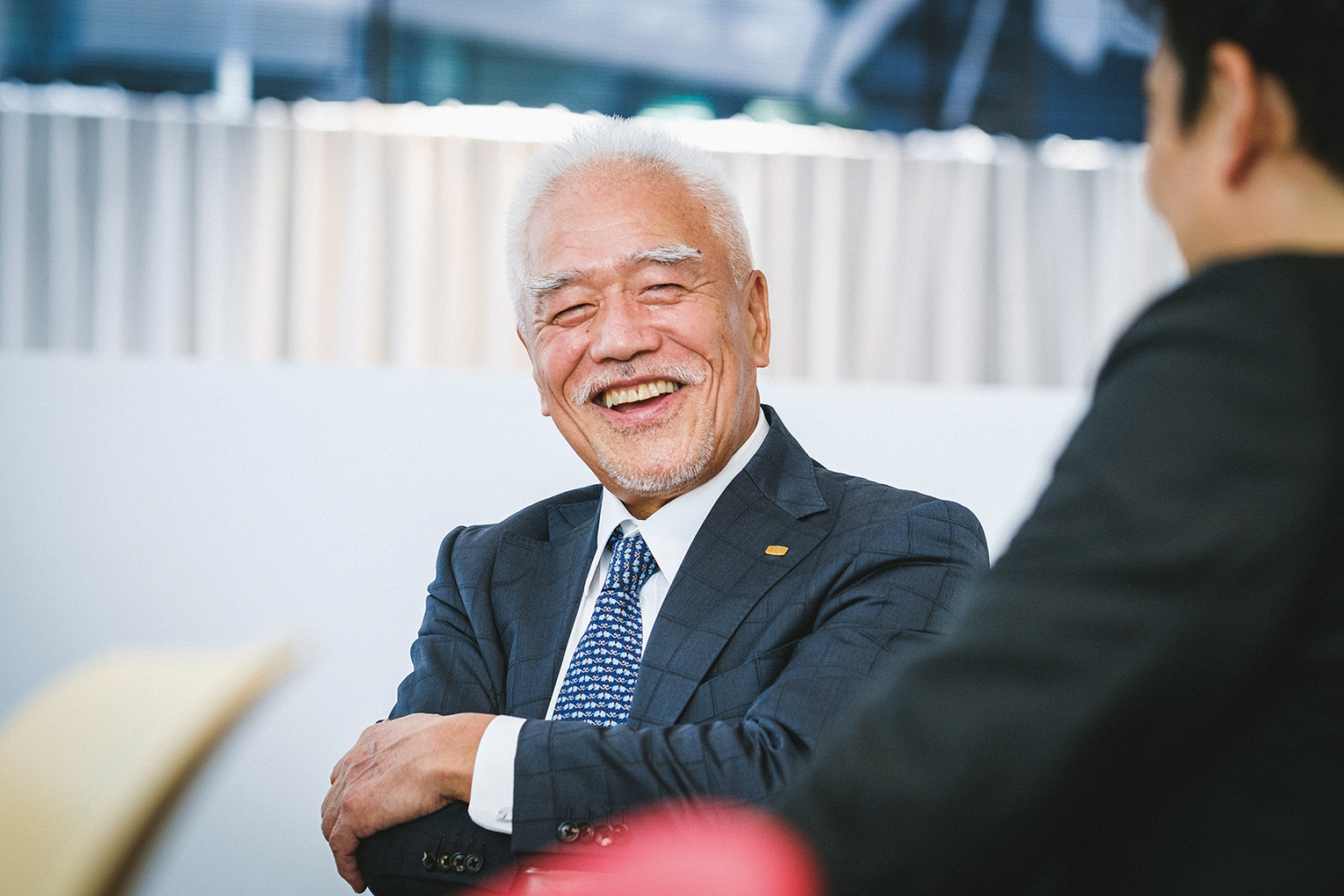
ASHIZAWA
He then said “I mean what do you do besides architecture?,” so I told him I do kickboxing, and his expression completely changed. *Laughs.* That conversation was the start to me getting accepted to his architectural firm. You’ve known Mr. Ando for quite some time, haven’t you?
TATENO
Mr. Ando used one of UNION’s products on one of his architectural works, which we published a photo of without his permission. He saw this and demanded that the person in charge get down to his office immediately, so I flew down there. *Laughs.* From then on, we’ve worked with him quite a few times and are still in contact with him today. UNION wouldn’t be where it is today if not for architects, like Mr. Ando, placing orders whereby we could improve our techniques and skill. How long did you work at Mr. Ando’s firm?
ASHIZAWA
6 years.
TATENO
Those six years must have been a great experience for you, no? I mean you did go on to start your own firm.
ASHIZAWA
Yes, I learned a lot working there. I was able to take part in the Awaji Yumebutai project and decided to become independent after that was finished. I was around 28 or 29 years old.
TATENO
Did things go well after starting your own firm?
ASHIZAWA
In the beginning, I contracted almost no architectural projects. I took part in a lot of competitions for projects and pitches for exhibitions and occasionally got to design small shops, but that was about it. Slowly jobs started to come in, and I was able to make architectural work my main focus.
TATENO
Awaji Yumebutai is really an amazing piece of architecture. You’ve also worked on a lot of private residences, haven’t you? All of them have been incredible works that serve as testament to your career.
ASHIZAWA
Thank you very much.
TATENO
Are there any projects that you have worked on that stand out in your mind?
ASHIZAWA
The first architectural project I took part in was an apartment complex in Toyonaka, Osaka. Rather than designing a bunch of conventional cookie-cutter one-room apartments, we aimed to create a multi dwelling model for the space. On the northside of the plot, there was a fourteen-storey apartment complex. Besides that, there were a few nagaya rowhouses and a market on the southside. The location was open with a great view.
TATENO
Interesting.
ASHIZAWA
We positioned the hallway of the complex to face south and let it function as a kind of alley that continued on to an external earthen floor, an internal earthen floor, and then the dwelling’s rooms. Each area was designed as a unique zone with its own character. We created a connecting space between the zones that featured sliding doors or movable walls attached to hanging pipes that allowed the resident to decide the degree of separation between the inside and outside worlds when moved. This system made it possible for inhabitants to customize the view from their residence as well as their desired degree of communication or privacy.
TATENO
That’s great that you gave residents the ability to adjust the space according to their lifestyle. What a perk for a multi dwelling unit!
ASHIZAWA
Thank you. This was the first project I worked on after setting up my own firm, so it’s really special to me. The building stands out for the combination of concrete, glass, and metal that make up its appearance. This might be due to the influence of the master, Tadao Ando. *Laughs.*
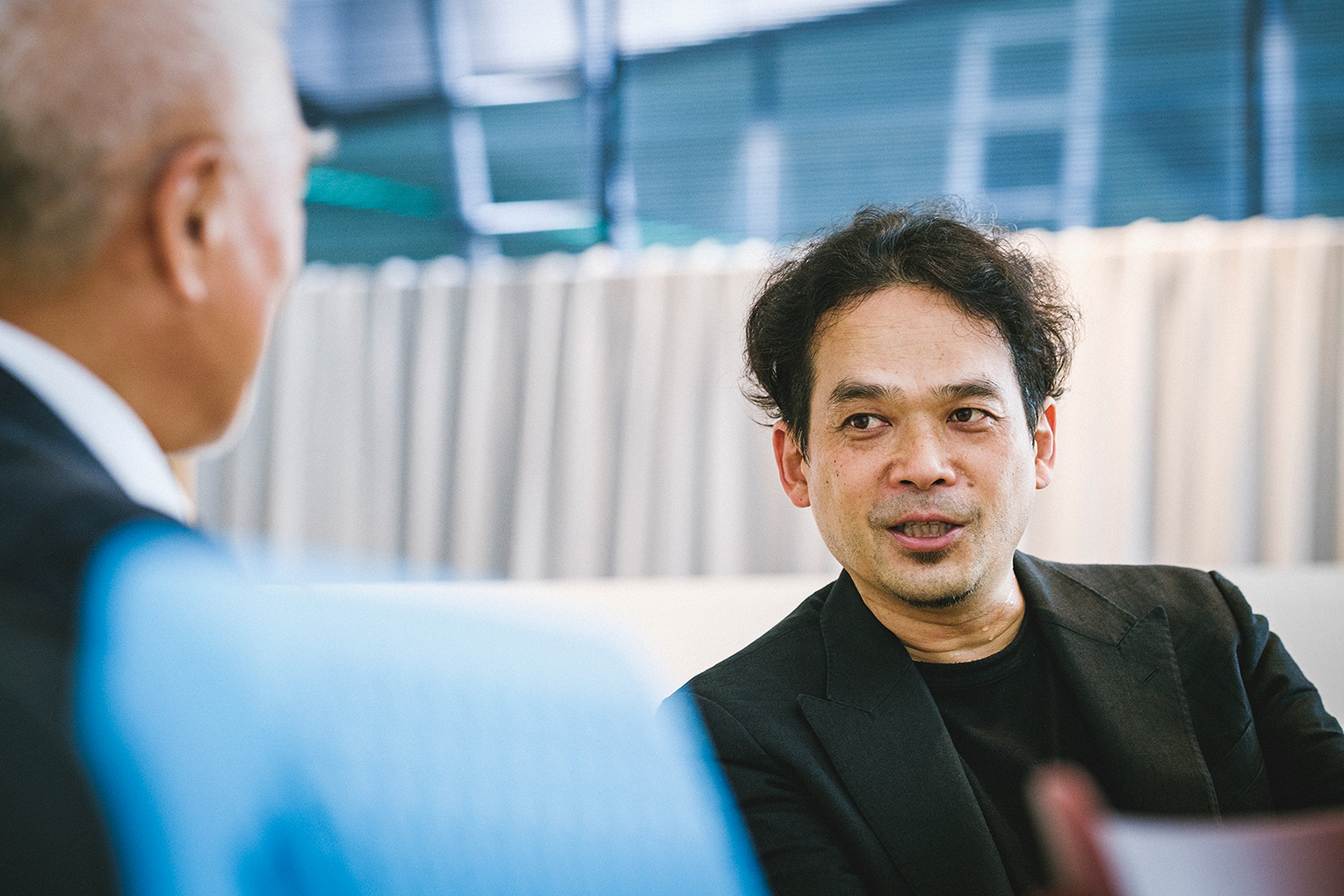
TATENO
Looking at the many works of Mr. Ando, there seems to be a time when his style changed. Have you noticed any changes in your style over the years?
ASHIZAWA
Now that I think of it, there was a private residence that I worked on in 2007 that may have signified a change in my style. Unfortunately, the project never came to life, but I was trying to build an eight-storey structure on 30 square meters of land.
TATENO
30 square meters! That’s an incredibly narrow plot.
ASHIZAWA
At the time, I was considering whether we could apply the natural structure of trees and plants to architecture. I was looking at architecture as a part of nature in the broadest sense, meaning all things existing in the universe, including humans. The project had a lot of experimental elements to it.
TATENO
Aiming for an eight-storey structure must have really raised the level of difficulty.
ASHIZAWA
The site was really narrow, but we had already accounted for the height based on the conditions we were given, so we tried to create a structure that fused the living spaces between plants and humans. We tried to do this in both a flat and cross-sectional way. The spaces weaved together like a vine and were supported by ascending beams. Each floor was covered in dirt that had been planted with seeds from various plants that grew in the area. We tried to make it as green as possible.
TATENO
Wow.
ASHIZAWA
What’s more, the steel pipes used in the structural skeleton functioned as the pipe’s that made up the building’s infrastructure. We used as few facility lines as possible to supply each floor. The building was also designed to effectively use natural sources of energy, such as solar, wind, and rain water, to provide the energy required for living in the complex. This meant it wasn’t dependent on municipal infrastructure. Much like a tree, we built a system that allowed the building to circulate energy. We even got rid of any fixed walls that would separate the outdoor and indoor spaces. Just like traditionally Japanese adjustable partitions, such as shoji and fusuma, we tried to make the building’s external walls from several types of membranes with differing attributes.
TATENO
What an interesting project!
ASHIZAWA
One thing was there were no elevators, just a set of external staircases, despite it being eight-storeys tall. *Laughs.*
TATENO
It sounds like it would be good for one’s health. *Laughs.*
ASHIZAWA
This project made us rethink the relationship between nature, people, and architecture, all while working with a minimum plot of urban land. Unfortunately, we had difficulty acquiring the site and had to let the project go. From that point forward, one of the architectural themes I began considering was the integration of architecture with the natural world. You could say that this project changed the way I thought about design.
TATENO
Looking at your portfolio up until now, I certainly get a sense of this theme at play in your work.
TATENO
What are your thoughts on making a place easy or comfortable to live in?
ASHIZAWA
Actually, I lived for 12 years in the apartment complex in Toyonaka that I just talked about.
TATENO
Is that right?
ASHIZAWA
I designed and created the structure, so you could say I wanted to provide an example for how to live there. I felt like I should experience the place myself, so I decided to actually go and live there. As part of the building concept, I focused on making rooms that would be exposed to a natural breeze. In fact, I didn’t have an air conditioner when I lived there. I was on the top floor so it was really hot. It was like a competition to endure the heat. *Laughs.
TATENO
*Laughs.* Today, people are seeking out homes where they can feel closer to nature, so I really aspire to that sort of lifestyle. On a different note, you study a lot of different fields in addition to architecture, don’t you? Do you think about applying this knowledge and style of learning to your architecture?
ASHIZAWA
I incorporate various ideas into the design and build of my architectural works and am always looking to do something new with my architecture. Originally, Japanese architecture functioned as a part of the cycle of nature, so I am trying to revive this natural cycle once more. I work on selecting construction methods and products that limit the emission of CO2 as much as possible.
TATENO
The other day I was speaking with Mr. Sano, the president of YASUI ARCHITECTS & ENGINEERS, INC., and he was discussing how in Europe there is a particular focus on the environment when it comes to craftsmanship and production. I think sustainable approaches to manufacturing and production will become extremely important in Japan as well moving forward, and the same can be said for architecture. When looking at your works, I can tell that they have been made with sustainability in mind. For example, you’ve used earthen walls on some structures.
ASHIZAWA
That’s right. I used earthen walls at SETRE MARINA BIWAKO near Lake Biwa as well as at the MINAMIHANADA TOMB NO. 50 residence in south Osaka. For the exterior walls, we mixed in some cement in order to prevent corrosion from the rain. Rather than employing industrialized finished products, we tried to use natural materials collected from the surrounding region as much as possible. At the same time, we paid homage to traditional Japanese construction techniques and worked to expand the field of modern architecture by focusing on earth and plaster.
TATENO
When I was young I lived in a house made in the Sukiya-zukuri style. I feel really at home in places built using traditional construction methods. These structures are designed to circulate air and provide a lot of other health benefits. As a residence for living, convenience is of course important, but you also need a human approach to life that fosters a coexistence with the natural world. I think building residences such as these connects back to the sustainable architecture I was just discussing.
ASHIZAWA
I’m with you. I’ve covered the walls and ceiling of the apartment I currently live in with clay. I find it both physically and psychologically enriching. The space is really comfortable.
TATENO
Wow. So you’re allowed to do DIY projects at your apartment.
ASHIZAWA
I bought a previously-owned apartment, so I’m doing with it as I like.
TATENO
That’s great!
ASHIZAWA
The apartment I live in was built around 50 years ago. We have to start thinking about how we are going to repair and improve old structures and housing complexes in the future. There are ways to overcome structural issues by retrofitting buildings to make them earthquake resistant, while adding value through repairs and improvements that allow a building to be lived in longer. We can give them a new lease on life.
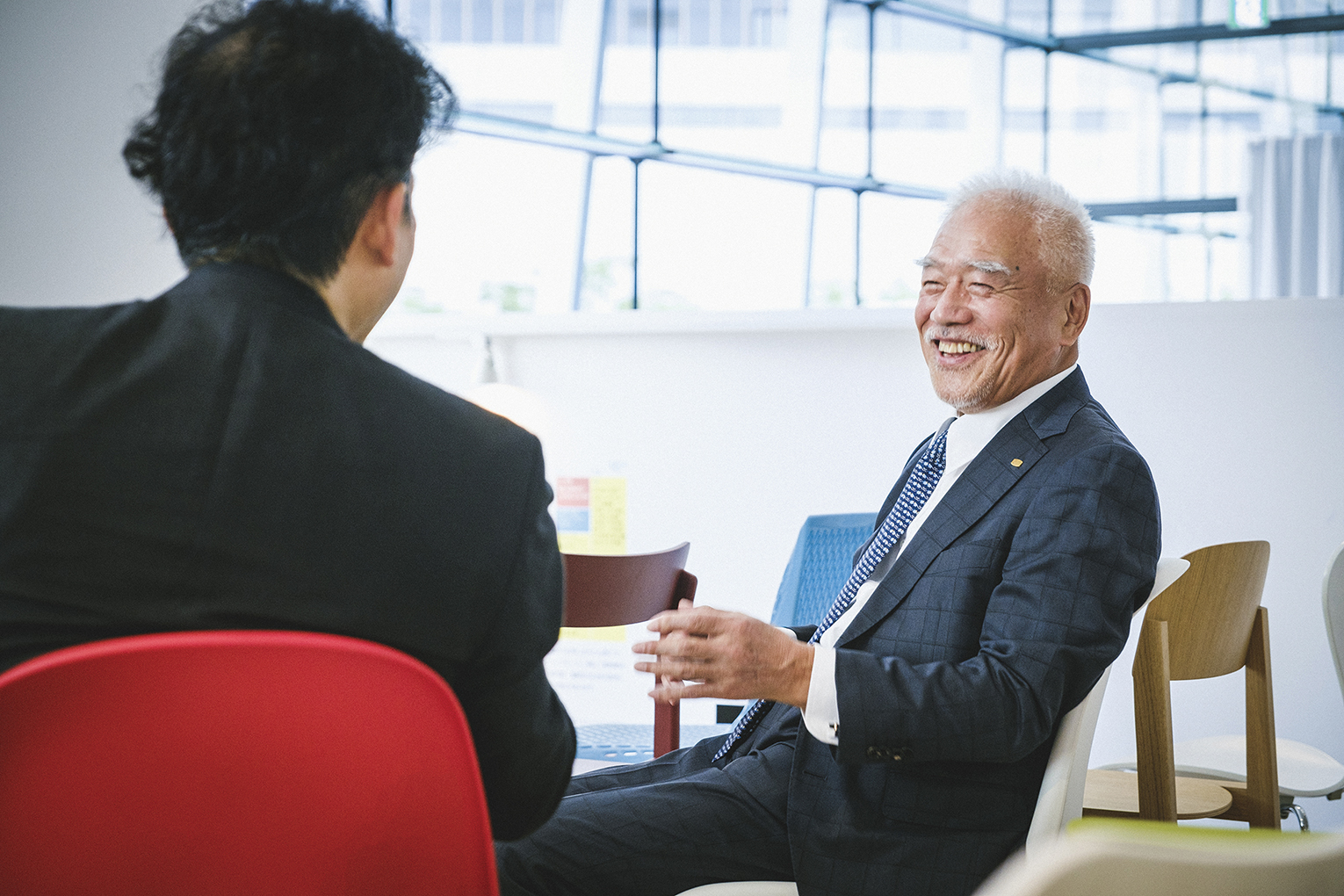
TATENO
Recently, wood as a material is being revisited. You’ve always taken a sustainable approach to your work, so by using materials that have limited environmental impact, you’ll be able to create structures that help realize your theme of unification with nature.
ASHIZAWA
You may be right. I think about all the many ways I can employ natural materials in my projects. In the past, I often used concrete as my construction material, but recently I’ve been thinking about whether I can achieve the same goals with a wood construction.
ASHIZAWA
I recently completed a project in America. It was a research facility for this company, and we made everything out of wood.
TATENO
Where in America was this?
ASHIZAWA
It was in Pennsylvania. The area surrounding the research facility was this very typical American suburb lined with block-shaped houses. The plot was originally a rich, dense forest, but the land was developed as part of a corporate lot, and nearly all the trees had been cut down. The north side of the site featured a gentle slope, but the soil had completely dried out due to the absence of trees.
TATENO
You must have faced a different set of conditions from dealing with Japanese soil.
ASHIZAWA
Yes. We aimed to build a structure on the land that would regenerate the forest over time by moistening the dry earth with rainwater. For the building, we drew a flat fractal-like shape that spread across the entirety of the site much like the branches of a tree. We conformed to the differing elevations of the plot’s topography, and the level of the buildings also changed accordingly. The facility was designed so that any rainwater falling on the roofs would get dispersed across the entire site and permeate down into an aquifer deep in the earth.
TATENO
So rather than just making a beautiful work of architecture, you tried to regenerate the forest through your design. What an amazing project!
ASHIZAWA
Instead of seeking out a homogenous environment, I sought to create a nonuniform place that conformed to the changes in topography. The design paid particular attention to the wind and created a microclimate where gentle breezes could be felt here and there within the space itself.
TATENO
Was there some sort of inspiration for you to think up a design like that?
ASHIZAWA
I once learned about a belief among Native Americans where they considered what they could do now to benefit their descendents seven generations in the future. Seven generations is around 200 years, so they were protecting the natural environment and circulating its resources with thoughts directed towards the future. Their ideas comprised a wisdom and set of methods for sustaining civilization, so I decided I wanted to try and regenerate this land using a design and plan that would continue to promote their sustainable intentions.
TATENO
What a grand idea. I’m reminded that what is constantly expected from the architectural industry is not to focus on the moment we are living in now, but rather to think ahead to the coming generation. At UNION, we want the hardware we produce to be used well into the future. To achieve that, we have to continue to make top-quality products for our clients. We have to start taking a sustainable approach whereby we do things like maintain and repair products that have been extensively used so they can continue to be utilized in the years to come.
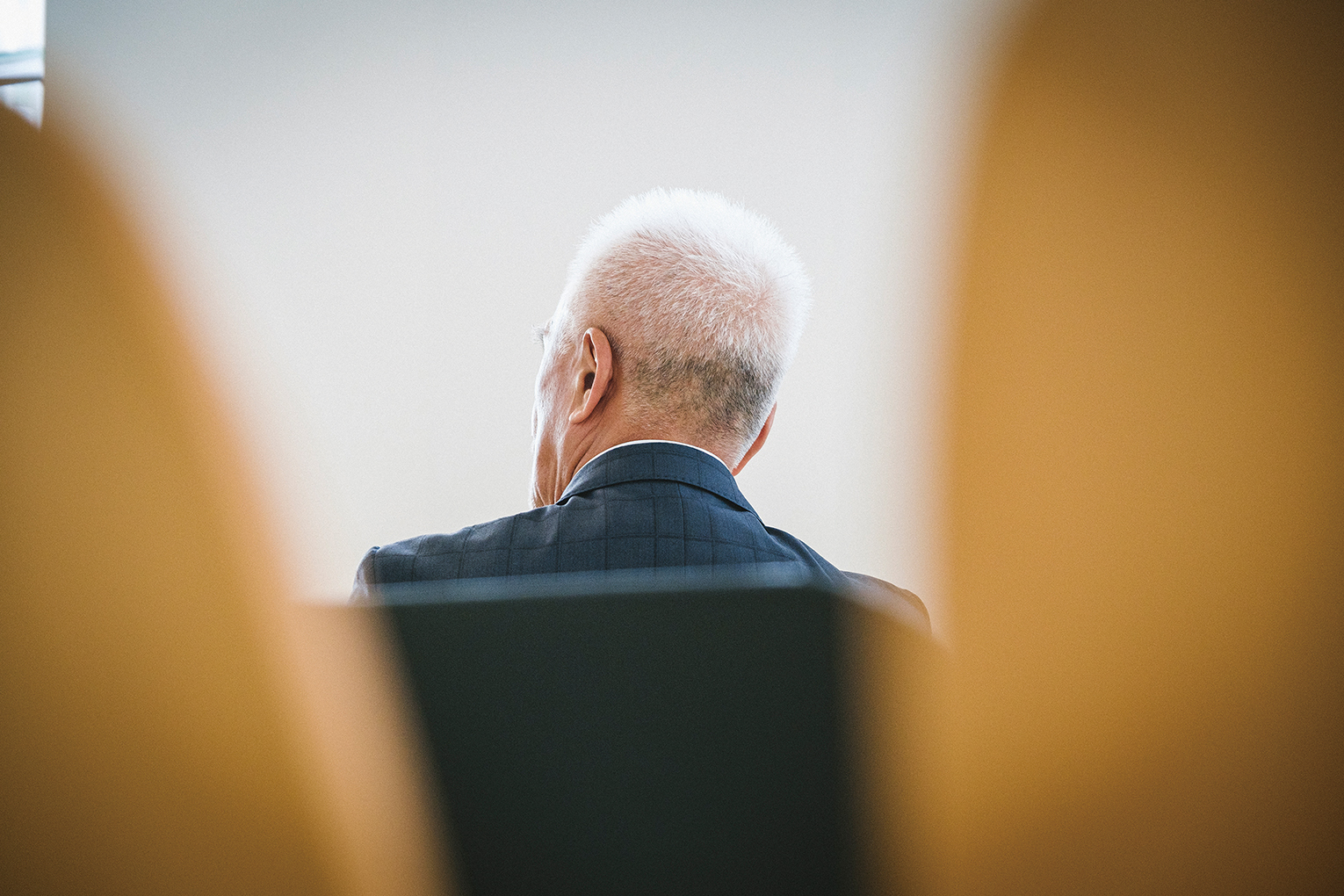
ASHIZAWA
I agree.
TATENO
I really would love to see the work you did in Pennsylvania in person.
ASHIZAWA
Please go check it out, although Pennsylvania is a bit far. *Laughs.*
TATENO
Do you have much interest in hardware, such as door handles and other metal fixtures?
ASHIZAWA
Of course! Hardware is one of the elements that brings together an architectural space, so I always consider what type of hardware would best match a given project in terms of material and design.
TATENO
You yourself have your own favorite types of hardware, don’t you?
ASHIZAWA
I do. UNION has made a lot of custom handles for me based on my designs.
TATENO
At UNION, we have been engaged in the hardware business for many years. In the beginning, we didn’t carry many ready-made products and took the basic stance of producing a product after receiving the order for it. After years of taking orders and making pieces of hardware, we eventually began to build up a stock of ready-made products.
ASHIZAWA
So you hadn’t yet established hardware with a standard size and shape.
TATENO
When I’m talking about custom or order made products, I’m not just referring to those with an elaborate design. From the start, we adopted a lot of materials that had never been used before or combined different materials in new and innovative ways. We received a great variety of orders, some extremely challenging in nature. That said, UNION would not have the skills and techniques it does today without these sorts of difficult orders. I believe that challenges lead to growth. Today, most architectural works are adorned with the same types of hardware, and in many instances, this can give off a somewhat drab impression. At UNION, our hope is to continue making new products from here on. We want to work with architects and artisans to develop products that we then send out into the world.
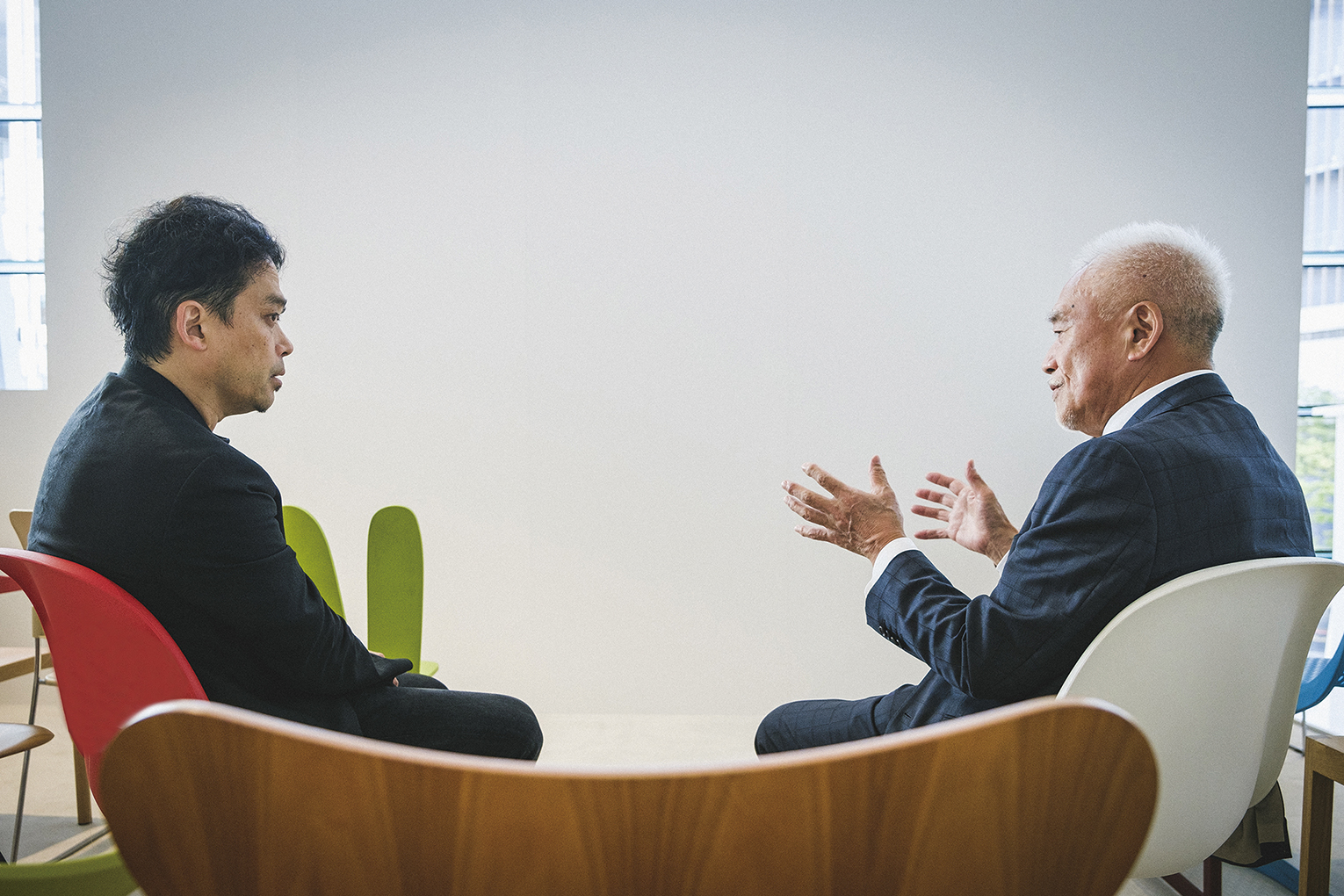
ASHIZAWA
That type of direct communication can really give birth to some interesting ideas.
TATENO
That’s right. Sometimes the architect selects the door handles and hardware. Other times, these are selected by the general contractor. In the past, we saw more of the former. That said, whether it be a custom-made or ready-made product, we are thrilled whenever someone uses one of our products.
ASHIZAWA
I’ve used UNION hardware several times in my projects.
TATENO
Thank you. We feel blessed that our products are used by so many architects. I’m overjoyed to learn when people continue to use our hardware, but looking at changing trends from past to present, I’m afraid that bland and commonplace products will soon become the norm, if things don’t change.
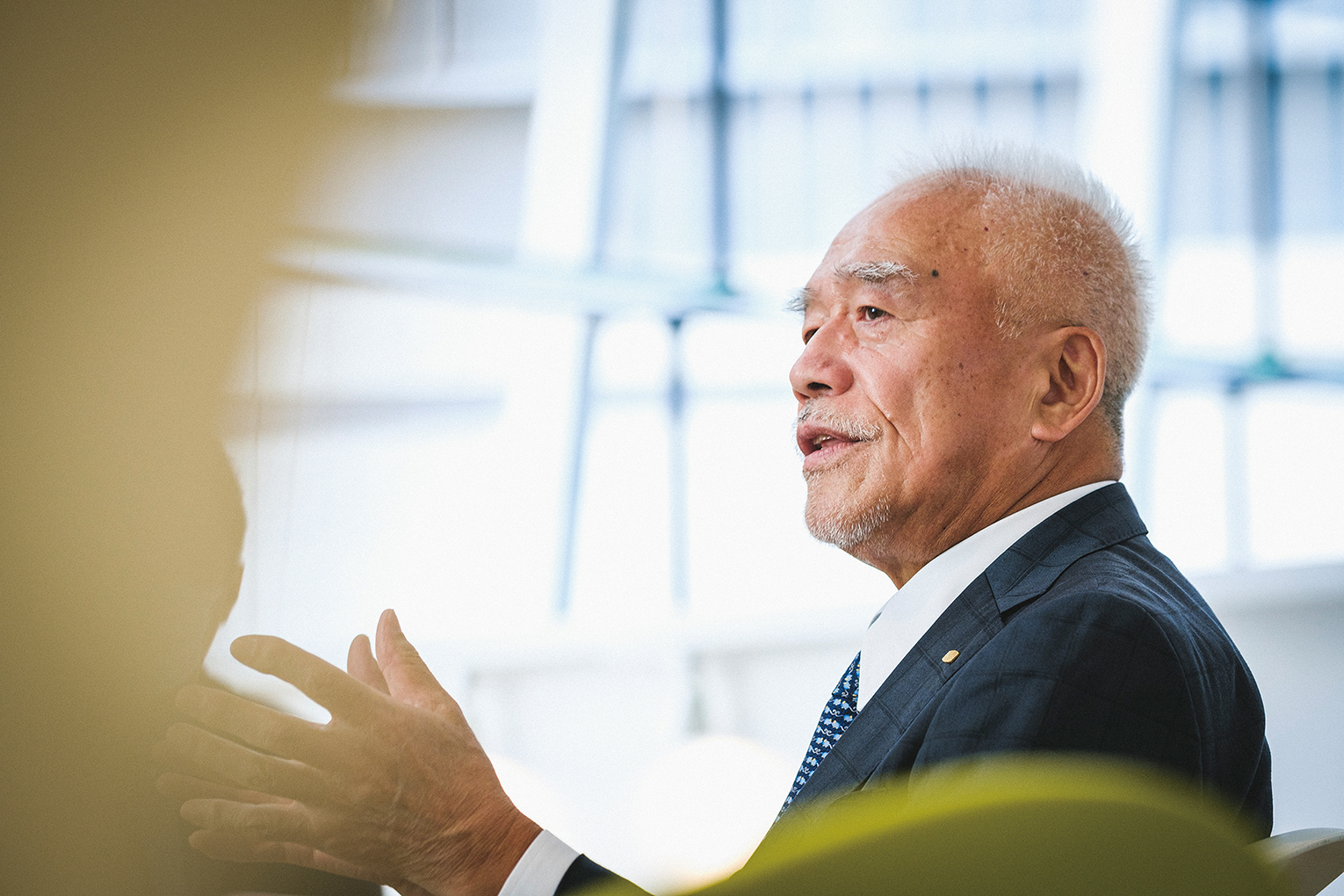
ASHIZAWA
What do you mean exactly?
TATENO
When I look at recent architectural works, I notice a lot of simple handles and hardware being used. A lot of these structures are just too calm and relaxed. Japan takes a scrap and build approach to construction, and we are seeing a growing number of increasingly simple architectural projects taking shape. If things don’t change, I’m worried Japan’s cities are going to become colorless and uninspired.
ASHIZAWA
You make a good point.
TATENO
Architecture has the power to move and captivate people. Exceptional architectural works attract people to a city, making them an asset to the city itself. This is why I hope that Japanese society will provide a better platform for young architects, such as yourself, to be active and thrive.
ASHIZAWA
I’ve also been worried by signs that interesting architecture isn’t being created overseas either. It seems people are taking on various types of new projects, but in the end, a lot of these never come to fruition.
TATENO
Back in the days, New York was filled with inspiring architecture. Today, we’ve made a lot of technical advancements compared to the past, so I really want Japan to capitalize on these and make some impressive architectural works for the future. The problem is these advancements in technology have made it possible to construct buildings over a very short time frame. In one sense, this is a good thing, but it might be interesting if we think of ways for people to enjoy the site during the construction period.
ASHIZAWA
I agree.
TATENO
You are currently engaged in some projects, and I’m excited to see what fantastic works you have in store for the future. I’m sure you’ll require door handles and hardware, so please feel free to let us know if you need anything. We will do our best.
ASHIZAWA
Thank you.
ASHIZAWA
Before the spread of COVID-19, people lived in the city or suburbs and commuted to work. That was the lifestyle. Today, people are working more from home, which is resulting in a lot of issues related to mental health. The countryside, on the other hand, has lower building density, richer natural environments, and overall greener spaces. With options like workations, people are increasingly heading to the countryside for work, and this trend has gained speed under corona. I think it’s time for us to take another look and reevaluate all the various regions across Japan.
TATENO
There are a lot of companies that have initiated work-from-home policies, but there is definitely something to be gained by going to the office. Specifically because of our experience with the coronavirus pandemic, I feel a sense of people longing to get reconnected. I believe you are doing some work to reassess various regions of Japan, but concretely speaking, what does this entail?
ASHIZAWA
For my university work, my students and I are researching abandoned towns and depopulated villages. For several years, we have been thinking about what we can do to revitalize these areas. I am currently working with students in my research lab on a project to reconstruct the abandoned village of Oori-cho in Hikone, Shiga.
TATENO
So you are also a professor at university. I imagine students learn a lot from getting out and doing fieldwork rather than just sitting and studying at their desk.
ASHIZAWA
There is one more ongoing fieldwork project that I am working on. The Okishima Island RYUBOKU HUT Project is taking place at the town of Okishima-cho, which is on the remote island of Okishima on Lake Biwa. Using typically difficult-to-dispose-of driftwood as our construction material, we aimed to build a rest area for the town and island for this project. By transforming the driftwood into a raw material and using it at the very site where it washed up, our objective is to promote the circulation of resources within the local area.
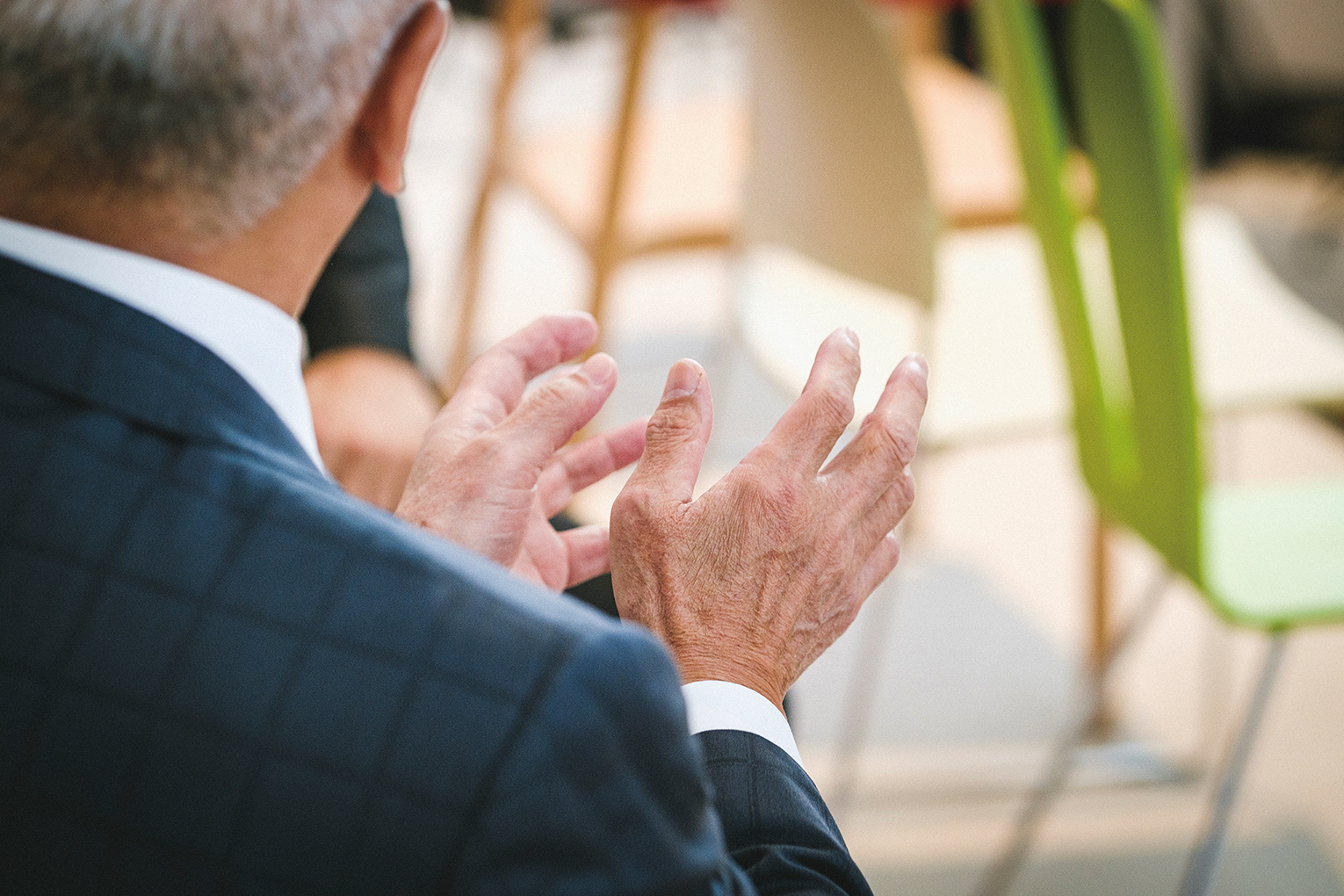
TATENO
That’s a really interesting project. When we exhibited at the Milan Furniture Fair, we featured the sand mold casting process as part of our display. It became the talk of the exhibition, and we received over 50,000 visitors to our exhibit as a result.
ASHIZAWA
50,000 people! That’s impressive.
TATENO
Before entering the venue, visitors would check out a collection of our past works, such as classic UNION door handles, molds, and inflated casts. After viewing these works, they would then get an actual demonstration of the sand mold casting process. People were really excited to be able to see this artisanal process firsthand, so your students must have learned a lot and been really happy to experience that sort of craftsmanship in person as well.
ASHIZAWA
What you learn from books or on the internet is completely different from what you learn by being onsite touching materials and thinking about the project as a team. Of course, both forms of learning are necessary.
TATENO
You’re right. The driftwood project sounds like an excellent educational activity. Students were able to get an idea of the architectural process, while learning about and strengthening their understanding of sustainability initiatives.
ASHIZAWA
Thank you. There are differences between each piece of driftwood, so there was a chance that part of the structure would collapse. Moving forward, we intend to take a trial-and-error approach to finding the ideal structure for the facility. Although it is an incomplete work in progress, I hope that the island’s inhabitants and visitors will continue to love what we are trying to create.
*Interview concludes*
Both
Thank you very much.
Planning: Naoyuki Miyamoto
Photography: Kesuke Kitaura
Writing: Fumiya Daito
Web Direction: Ryo Kijima